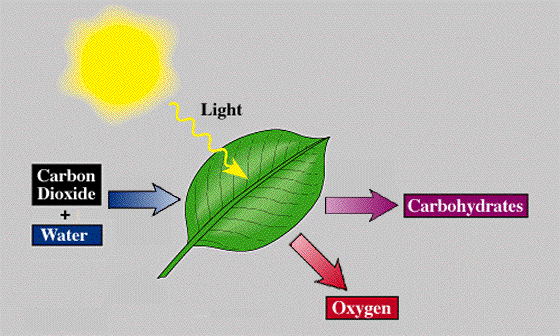
Information Clustering & Understanding Photosynthesis
Overview
Photosynthesis is one of the most essential natural processes studied in biology. Students can understand very little about plants, trees, vegetation, and crops without understanding the process by which they convert sunlight and its energy, in combination with carbon dioxide and water, into carbohydrates and oxygen (and a bit of gaseous water).
This activity builds students’ understanding of the process of photosynthesis by having them cluster information about the process of photosynthesis, having them critique other students’ information clustering, and then finally having them respond to other students’ critiques.
Method and Procedure

(1)
Put students into groups of three. Argument-Centered Education recommends that student grouping be done heterogeneously, so that middle- and lower-performing students can derive the benefit of working with higher-performing students. Give each group a number.
(2)
Distribute a pair of scissors, six large (4” X 6”) index cards, and the “How does a plant get energy” document (the one with the leaves of information about the process of photosynthesis on it).

(3)
Tell groups that they should cut out the leaves of information and cluster them together in a manner that makes sense to explain the process of photosynthesis, and the scientific research that has been done on photosynthesis. They can form no more than six clusters, and they should name each cluster, using the index cards for that purpose. They might cluster the information into, for instance:
“Products of photosynthesis”
“Reactants enter the plans,” or
“Photosynthesis produces plant growth”
(4)
As groups are working on their information clustering, distribute two copies of the Argumentation Form to each group. Tell the groups that they should arrange their clusters (with their index card labels) on their table or desks, with the Argumentation Forms above them. They should be sure to write their group number and member names on the top of both Argumentation Forms.
(5)
When groups have been given enough time to complete their information clustering, groups should move around the room to review the information clustering of the other groups. They should find a group whose information clustering they disagree with – one whose clustering is especially different from their own, or is especially flawed, in their view. They should take one of the two Argumentation Forms above this group’s information clustering and complete the critique portion of the form.

(6)
Each group should perform one critique on another group’s information clustering. No group can have more than two critiques performed on their clustering: once the second Argumentation Form is filled in, that group cannot be critiqued again.
(7)
After the critiquing is complete, groups should return to their own information clustering, and they should respond to the critique (or critiques) that they received. They can respond by trying to refute the critique, by conceding that it is valid (and then re-clustering their information on photosynthesis as a result), or some combination of the two. If a group didn’t receive any critiques of their information clustering, they should help another group respond to their critique(s).
(8)
The activity should culminate in groups sharing out the critique(s) they received, and their response(s). You should ask students to reflect on and think through the most logical and well-organized way of clustering information about photosynthesis, and you should be sure that you flag for students any misunderstanding of the process of photosynthesis revealed by any group’s information clustering.


